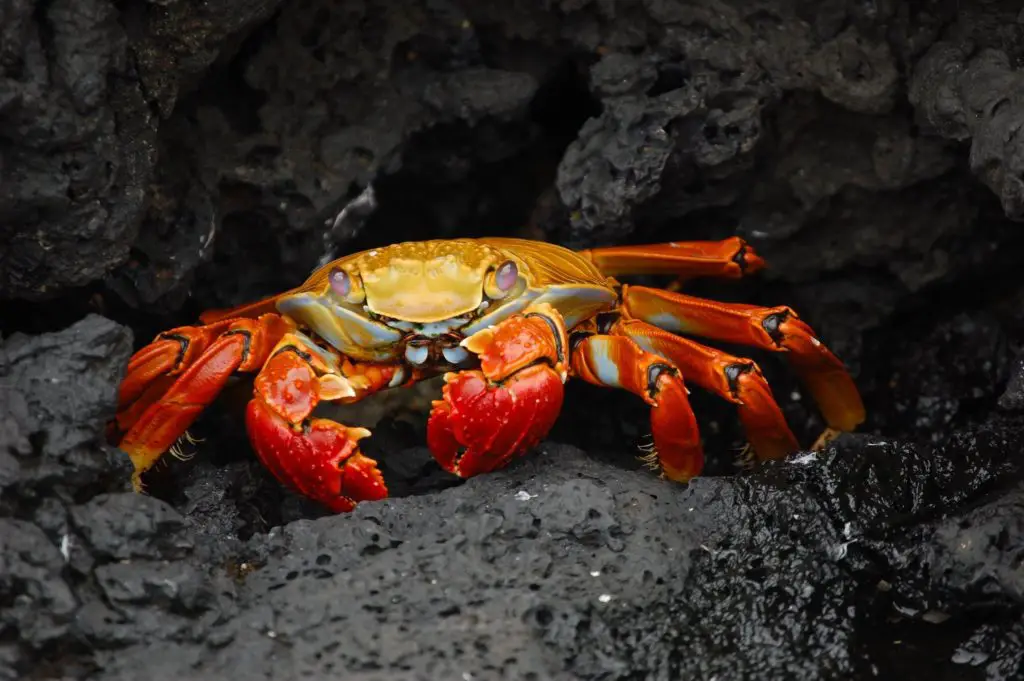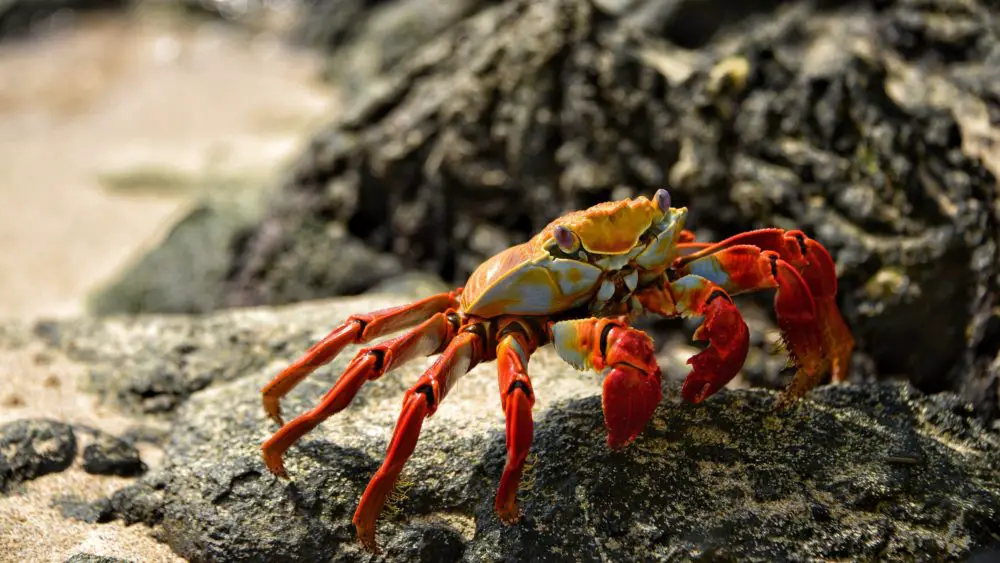Before you add a crab to your tank, you need to ensure it will survive and live a happy and content life.
One of the most important things to be aware of is what your crab needs to eat and what their diet will consist of.
Freshwater crabs will eat both plant and animal matter, and they will also eat any organic matter that happens to be floating around in the tank.
You can also supplement their diet with store-bought food. From Some of the things that your crab will eat are:
- Algae wafers
- tadpole pellets
- Bloodworms
- Seaweed
- Cooked peas
- Cooked zucchini squash
- Brine shrimp
- crushed dry cat food
- Flies
- Once in a while, you can feed them tiny pieces of crushed eggshells

Something that you should be aware of is that adding seaweed to the tank can cause algae to grow in the water, but this isn’t an issue as crabs can eat algae.
Some crabs will even eat live fish if they are small enough, though not all of them will. This is why you should be careful with any new additions to the tank if they are intended to be kept as pets.
Make sure to keep an eye out for the foods that they enjoy eating and those they don’t. You should always remove any food that has not been eaten and has been there for more than a few days.
You should start with a bit of food and add more only as needed. Adding too much food can cause unhealthy conditions for your pet crab.
As well as food, ensure that you are meeting the crabs needs in terms of its habitat, water conditions, and more.
Setting Up a Proper Habitat
The first thing that you are going to need is a tank that is suitable for this purpose. The smallest tank that you should get is 5 gallons. Try to get the biggest tank you can for the space you have available, but 10 gallons and up is ideal.
This will ensure that your crab does not get cramped as they grow, and you will have room to introduce additional crab in the future.
The majority of aquarium crabs are not 100% aquatic, which means they need dry land in the tank to retreat to. There are some crab that are 100% aquatic and won’t need any dry land. Be sure to confirm which you are buying.
A good ratio to work with in this instance is 4 parts water to one part land. This can vary between different species, but you can use sand, rocks, and other elements to build a dry area inside of your aquarium.
One of the easiest methods is to pour sand into a corner of the tank, but a rock above water level can work also.
You can purchase setups pre-made online or in pet stores if you want to make sure that your habitat is definitely suitable, but you can make your own as well.
You will need to place your tank in a warm area that is not in direct sunlight, as this can be harmful to the crab. Once you have your dry area sorted out, you can fill the aquatic section with water.
Allow some time for the sand to settle before you place the crab inside of its new home. You will need to use filtered water for this purpose, and this is really important. Tap water contains chlorine, which can be dangerous to crabs.
Water Conditions
Crabs like water that is warmer and typically around 72 to 82 degrees. You can monitor the temperature of the water by using an aquarium thermometer in the water-filled section of the tank.
You should confirm the correct temperature with the seller upon purchasing your crab. However, if the aquarium does not meet these temperature requirements, then you will need to use a heater to make the water warmer.
For some species of crab, you might need to add a small amount of marine salt to the tank.
Finding Suitable Tank Mates
The majority of freshwater crabs will not be aggressive, and they can be placed with other fish and crustaceans, but the same cannot be said for all species of crab.
You should take care when adding new fish into the tank, just in case your crab mistakes them for dinner.
You can talk to the breeder about which fish you can place with your crab to avoid this situation. It is worth keeping an eye out when you introduce a new animal, just to be on the safe side.






